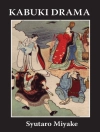Banned soon after its first midnight screenings, the prints seized and the organizers arrested, Jack Smith’s incendiary Flaming Creatures (1963) quickly became a cause célèbre of the New York underground. Championed and defended by Jonas Mekas and Susan Sontag, among others, the film wildly and gleefully transgresses nearly every norm of Hollywood morality and aesthetics. In a surreal and visually dense series of episodes, the titular “creatures” reenact scenes drawn from the collective cinematic unconscious, playing on mainstream film culture’s moral code in a way that is at once a love letter to classical Hollywood and a searing send-up of its absurdities.
Tracing the film’s production and reception history, Constantine Verevis argues that it embodies a unique type of cinematic rewriting, one that combines Smith’s multifaceted artistic work with exotic fragments drawn from the cinematic past. This study of Smith’s magnum opus explores its status as a cult film that appropriates the visual texture, erotic nuance, and overt fabrication of old Hollywood exoticism.
Mục lục
Acknowledgments
Introduction
1. Background and Production
2. Reception and Controversy
3. The Film Work: Flaming Creatures
4. Aftermath and Legacy
Notes
Bibliography
Index
Giới thiệu về tác giả
Constantine Verevis is an Associate Professor at Monash University’s School of Media, Film and Journalism. His work spans both film theory and cultural studies, and his primary research area is media seriality, including film and TV remakes, sequels, and trilogies. His books include Second Takes: Critical Approaches to the Film Sequel (co-editor, SUNY Press, 2012), Film Trilogies: New Critical Approaches (co-editor, Palgrave Macmillan, 2012), B is for Bad Cinema: Aesthetics, Politics and Cultural Value (co-editor, SUNY Press, 2014) and others.












